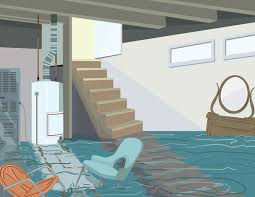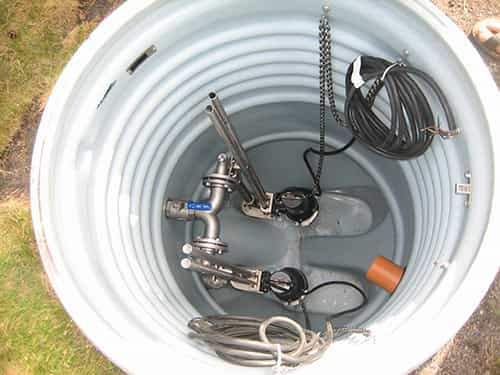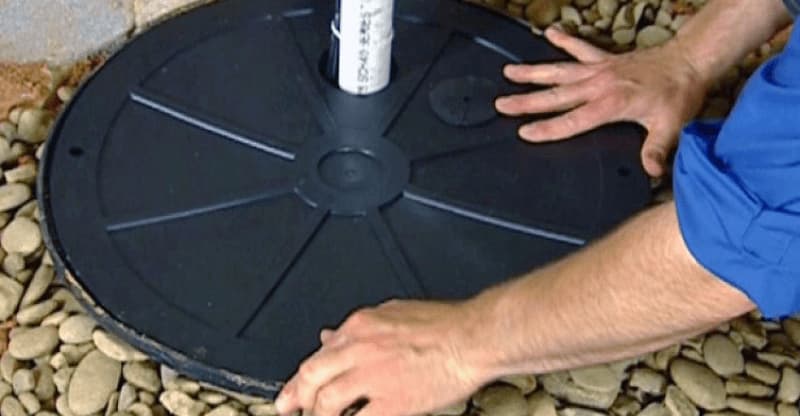A sump pump is a crucial component of a home’s basement waterproofing system. It helps prevent flooding by removing excess water from the sump basin and directing it away from the foundation. However, like any mechanical device, sump pumps can fail due to various issues. Understanding these common sump pump problems and knowing how to fix them can save you from costly water damage.
In this article, we’ll discuss the most frequent sump pump failures, their causes, and practical solutions to keep your pump running efficiently.

1. Power Failure
Problem:
A power outage is one of the most common reasons for sump pump failure. Since sump pumps rely on electricity, storms or electrical issues can leave them unable to function when needed most.
Solution:
- Install a battery backup or water-powered backup pump to ensure operation during outages.
- Use a uninterruptible power supply (UPS) for short-term power disruptions.
- Regularly test the backup system to ensure it works properly.
2. Clogged or Frozen Discharge Pipe
Problem:
Debris, dirt, or ice can block the discharge pipe, preventing water from being pumped out. This can cause the pump to overwork or fail.
Solution:
- Inspect the discharge line regularly and remove any obstructions.
- Install a grated cover on the discharge pipe to prevent debris buildup.
- In cold climates, use a heated discharge line or ice guard to prevent freezing.
3. Switch Problems
Problem:
The float switch activates the pump when water levels rise. If it gets stuck, tangled, or clogged, the pump won’t turn on or off properly.
Solution:
- Ensure the float moves freely and isn’t obstructed by debris.
- Adjust the switch position if it’s not triggering at the right water level.
- Replace a faulty switch with a vertical or electronic switch for better reliability.
4. Overwhelmed Pump (Oversized Sump Pit or Excessive Water Flow)
Problem:
If the sump pit is too small or the water inflow exceeds the pump’s capacity, the pump may run continuously, leading to premature burnout.
Solution:
- Upgrade to a higher-capacity pump if your current one can’t handle the water volume.
- Ensure the sump pit is large enough (at least 18-24 inches in diameter).
- Consider installing a secondary pump for heavy flooding situations.
5. Lack of Maintenance
Problem:
Neglecting regular maintenance can lead to clogged intakes, worn-out parts, and eventual failure.
Solution:
- Clean the pump and pit every few months to remove dirt and debris.
- Test the pump by pouring water into the pit to ensure it activates.
- Check the check valve to ensure it’s functioning correctly (prevents backflow).
- Lubricate moving parts (if applicable) and inspect for wear and tear.
6. Old or Worn-Out Pump
Problem:
Most sump pumps last 7-10 years. An aging pump may lose efficiency, overheat, or stop working entirely.
Solution:
- Replace the pump if it’s nearing the end of its lifespan.
- Consider upgrading to a more durable model (e.g., cast iron instead of plastic).
- Install an alarm system to alert you when the pump fails.
7. Improper Installation
Problem:
If the pump is not installed correctly—wrong size, incorrect positioning, or improper discharge setup—it may malfunction.
Solution:
- Hire a professional to ensure proper installation.
- Verify the discharge pipe directs water at least 20 feet away from the foundation.
- Ensure the pump sits on a stable, debris-free base.
What Is the Common Reason for Sump Pump Failure?
The most common reason for sump pump failure is power outages, especially during heavy storms when the pump is needed most. Without electricity, the pump cannot operate, leaving your basement vulnerable to flooding. Other frequent causes include clogged discharge pipes, stuck float switches, lack of maintenance, and old age (most pumps last 7-10 years). Installing a battery backup or generator can prevent power-related failures, while regular cleaning and inspections help avoid mechanical issues.
What Are the Negatives of a Sump Pump?
While sump pumps are essential for preventing basement flooding, they do have some drawbacks. They rely on electricity, meaning power outages can render them useless unless you have a backup. They also require regular maintenance to prevent clogs and mechanical failures. Additionally, improper installation (such as incorrect pipe routing) can lead to inefficiency or failure. Some pumps can be noisy, and cheaper models may wear out faster, requiring frequent replacements.
Why Is the Sump Pump Not Working?
If your sump pump isn’t working, possible reasons include:
- Power failure (check if the outlet is working).
- Tripped circuit breaker or GFCI outlet (reset if needed).
- Clogged discharge pipe (clear any blockages).
- Stuck or broken float switch (ensure it moves freely).
- Burned-out motor (due to overuse or old age).
- Frozen or obstructed discharge line (common in winter).
Testing the pump by pouring water into the pit can help diagnose the issue. If it still doesn’t turn on, professional repair or replacement may be necessary.
How Do I Know My Sump Pump Is Bad?
Signs of a failing sump pump include:
- Strange noises (grinding, rattling, or humming) indicating motor issues.
- Frequent cycling (turning on/off too often) due to switch problems.
- Failure to turn on when water levels rise.
- Visible rust or corrosion on the pump.
- Continuous running without shutting off, suggesting a stuck switch or clog.
- Old age (if it’s over 7-10 years old, replacement is recommended).
If you notice any of these signs, inspect the pump immediately or call a professional to prevent basement flooding.
Preventive Tips to Avoid Sump Pump Problems
- Test your pump regularly (especially before rainy seasons).
- Keep the pit clean to prevent clogs.
- Install a backup system (battery or water-powered).
- Monitor with an alarm to detect failures early.
Final Thoughts
A failing sump pump can lead to severe water damage, mold growth, and costly repairs. By recognizing these common issues and taking proactive steps, you can ensure your sump pump operates efficiently when you need it most.
If you’re unsure about repairs, always consult a professional plumber or basement waterproofing expert to keep your system in top condition.
- The Ultimate Guide to Choosing the Best Sewage Pump for Your Home
- Common Sump Pump Problems and How to Fix Them in 2025
- Guide to French Drain Basements (2025 Edition)
- Guide to Sump Pump Battery Backups (2025 Edition)
- Zoeller Sump Pump: Reliability You Can Count On


